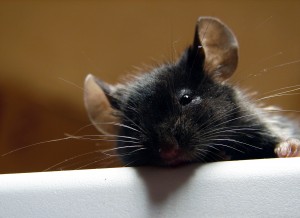TUESDAY, 19 MARCH 2013
Showing that stimulating certain cells causes animals discomfort has in the past been easier than identifying cells to detect pleasure. However research from Caltech has identified mouse neurons specifically receptive to stroking. The study showed that the pinch responsive neurons were not activated by a light stroke, in contrast to the newly discovered cells. Moreover a pinch didn’t stimulate the stroke neurons but was detected by pinch neurons. The specialised stroke neurons were found to lack a fatty coating surrounding most other sensory neurons, a difference which may be crucial for detecting light touches.
Mice given a drug to artificially stimulate the stroking neurons preferred the chamber in which they were given the drug, to one in which they weren’t. This showed that stroking is a positive stimulus in mice and so may be involved in certain learnt behaviours in their environment. This may seem obvious in hindsight, given that humans enjoy the sensation of stroking, but the scientists were careful not to assume unproven similarity between ourselves and an animal model.Future studies are likely to produce mice without the receptor required for these stroking neurons to work correctly, allowing researchers to determine the importance of the stroking sensation for mice. Similar neurons have been discovered in hairy areas of humans and so scientists may now begin to investigate similar detection methods in us. Knowledge of how we sense stroking may now only be a whisker away.
doi:10.1038/nature11810
Written by Toby McMaster.

